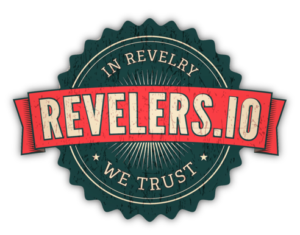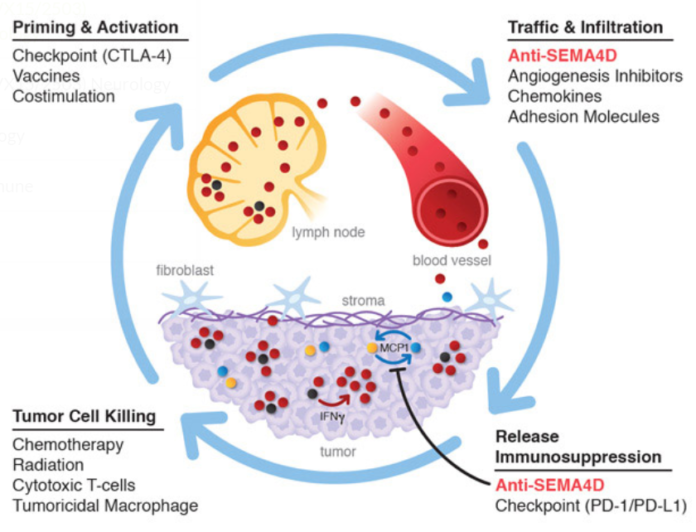Updated interim data from CLASSICAL-Lung study to be presented at the annual meeting of the American Society of Clinical Oncology (ASCO) in June 2019
Enrollment in Phase 2 SIGNAL Huntington’s disease trial complete; data expected in 2H 2020
ROCHESTER, N.Y., May 15, 2019 (GLOBE NEWSWIRE) — Vaccinex, Inc. (Nasdaq: VCNX), a clinical-stage biotechnology company pioneering novel investigational antibody therapies in cancer and Huntington’s disease, today announced financial results for the first quarter ended March 31, 2019, and provided a corporate update.
First Quarter and Recent Accomplishments:
- Presented interim results from the dose escalation phase of the ongoing CLASSICAL-Lung Phase 1b/2 study at the American Association for Cancer Research (AACR). The data demonstrated a 75% disease control rate for all dose escalation patients and 90% for subjects treated for at least two months, in response to combination therapy with pepinemab (VX15/2503) and avelumab.
- Announced completion of enrollment in the ongoing Phase 2, multi-center, randomized, double-blind, placebo-controlled SIGNAL study, a phase 2 clinical trial designed to assess the safety, tolerability, pharmacokinetics, and efficacy of pepinemab in subjects with early manifest and late prodromal Huntington’s disease.
Pepinemab Clinical Updates:
- Non-Small Cell Lung Cancer (NSCLC). The dose expansion phase of the CLASSICAL-Lung study is ongoing. The Company expects primary completion during the second half of 2019.
- Huntington’s Disease. The Company’s SIGNAL trial evaluating pepinemab for the treatment of Huntington’s disease is ongoing, with topline data expected in the second half of 2020.
- In addition, pepinemab is being evaluated in multiple investigator-sponsored trials (ISTs) in additional indications:• Melanoma – The UCLA School of Medicine, in collaboration with Bristol-Myers Squibb, is evaluating pepinemab in combination with the checkpoint inhibitors nivolumab and ipilimumab in two cohorts of patients with advanced melanoma whose tumors progressed during or following initial treatment with immunotherapy.• Osteosarcoma – The National Cancer Institute’s Children’s Oncology Group is evaluating pepinemab for the treatment of osteosarcoma• Other Cancers – Multiple “window of opportunity” trials are being conducted by the Winship Cancer Institute of Emory University to evaluate pepinemab in combination with immunotherapies in colorectal, pancreatic, head and neck cancer and melanoma
“During the first quarter, we continued to progress our CLASSICAL – Lung and SIGNAL clinical trials, and we are rapidly approaching important data milestones across both programs,” commented Maurice Zauderer, Ph.D., president and chief executive officer of Vaccinex. “In Huntington’s disease, our most advanced indication, we have completed enrollment in Cohort B of our SIGNAL trial as we look to replicate what we believe was encouraging data from Cohort A, the results of which we hope to publish later this year. At the same time, our CLASSICAL-Lung study is progressing as planned, and we look forward to providing updated interim open label data at the ASCO annual meeting this year. We believe pepinemab’s novel mechanism of action, which binds to a unique target, Semaphorin 4D, and blocks its signaling activity, represents an entirely new way of treating these serious diseases. We look forward to additional data from these important studies, as well as the ongoing investigator sponsored trials in melanoma and other cancers which, we believe, provide us with multiple opportunities to demonstrate the potential value of our pepinemab programs.”
Upcoming Milestones:
- Second quarter of 2019 – Presentation of additional data from the Classical-Lung study of pepinemab in combination with avelumab in NSCLC
- Second half of 2019 – Anticipated publication of SIGNAL Cohort A data in Huntington’s disease
- Second half of 2019 – Estimated primary completion date of combination study in NSCLC
- Second half of 2020 – Expected topline data from Cohort B of SIGNAL trial of pepinemab in Huntington’s disease
- Second half of 2020 – Estimated primary completion date of melanoma combination study being conducted at the UCLA School of Medicine with Bristol-Myers Squibb
Financial Results for the Three Months Ended March 31, 2019:
Revenue. Revenue for the three months ended March 31, 2019 was $94,000 as compared to $206,000 for the comparable period in 2018. Revenue recognized during 2019 was derived from the collaboration agreement with Surface Oncology.
Research and Development Expenses. Research and development expenses for the three months ended March 31, 2019 were $7.4 million as compared to $4.5 million for the comparable period in 2018. This increase was attributable to the increase in patients enrolled in active clinical trials.
General and Administrative Expenses. General and administrative expenses for the three months ended March 31, 2019 were $1.6 million as compared to $1.2 million for the comparable period in 2018. This increase was primarily attributable to costs associated with directors’ compensation and liability insurance.
Cash and Cash Equivalents and Marketable Securities. Cash and cash equivalents and marketable securities on March 31, 2019 were $11.3 million, as compared to $19.7 million on December 31, 2018. In order to ensure continued funding, the Company continues to actively explore partnering and financing options.
About Vaccinex, Inc.
Vaccinex, Inc. is a clinical-stage immunotherapy company engaged in the discovery and development of targeted biotherapeutics to treat serious diseases and conditions with unmet medical needs, including cancer, neurodegenerative diseases, and autoimmune disorders, with currently active clinical trials in Non-Small Cell Lung Cancer and Huntington’s disease. Vaccinex is based in Rochester, New York.
Forward Looking Statements
To the extent that statements contained in this press release are not descriptions of historical facts regarding Vaccinex, Inc. (“Vaccinex,” “we,” “us,” or “our”), they are forward-looking statements reflecting management’s current beliefs and expectations. Words such as “may,” “will,” “expect,” “anticipate,” “estimate,” “intend,” “potential,” “advance,” and similar expressions or their negatives (as well as other words and expressions referencing future events, conditions, or circumstances) are intended to identify forward-looking statements. Forward-looking statements may involve substantial risks and uncertainties that could cause our research and pre-clinical development programs, clinical development programs, future results, performance, or achievements to differ significantly from those expressed or implied by the forward-looking statements. Such risks and uncertainties include, among others, uncertainties inherent in the execution, cost and completion of preclinical and clinical trials, uncertainties related to regulatory approval, risks related to our dependence on our lead product candidate pepinemab (VX15), and other matters that could affect our development plans or the commercial potential of our product candidates. Except as required by law, we assume no obligation to update these forward-looking statements. For a further discussion of these and other factors that could cause future results to differ materially from any forward-looking statement, see the section titled “Risk Factors” in our periodic reports filed with the Securities and Exchange Commission (“SEC”) and the other risks and uncertainties described in our Form 10-K dated March 13, 2019.
Investor Contact
Jeremy Feffer
LifeSci Advisors, LLC
212-915-2568
[email protected]
Source: Vaccinex, Inc.












